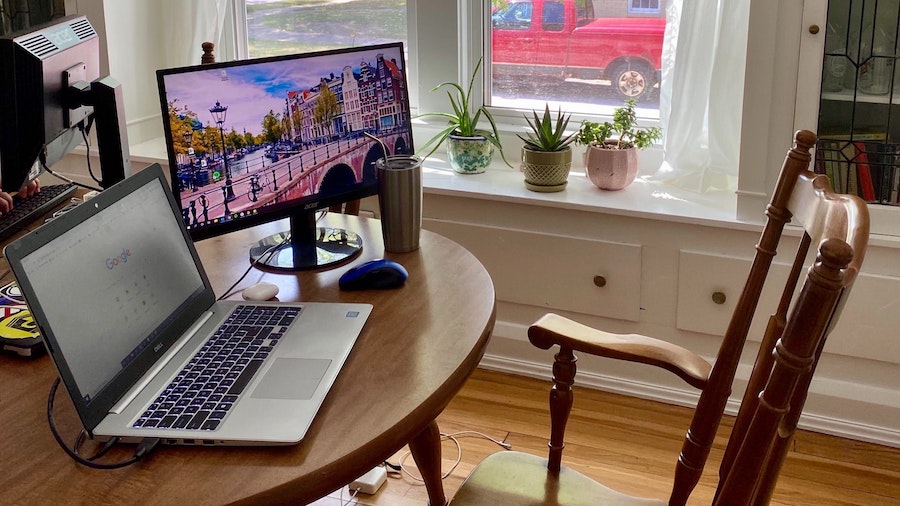Last updated January 4th, 2021.
By Patricia Lundy and Nga Pham
COVID-19 vaccinations have begun, but many workforces will continue to be entirely remote for months to come, with some making remote work a mainstay. For your new hires, this means that your onboarding approach must prepare them to enter an entirely remote workforce—something that isn't without its challenges. How can you make them feel right at home, and give them the tools they need to be productive?
In this blog, we will review how to provide a positive virtual onboarding experience from start to finish, and how technology will play a key role in the future of human resources and employee engagement strategies.
Employee engagement has become the new battle cry when it comes to remote work. Every single organization is on the hunt for technologies that speed up recruitment, onboarding, training, and learning, and that make it easier on the new hire.
Recruitment
More and more enterprises are virtualizing their recruitment process—from targeting talents and interviewing to making hiring decisions. Posting jobs to LinkedIn, Indeed, and other job hiring sites are an easy way for prospective employees to instantly share their resume and cover letters with hiring managers. But in addition to these kinds of platforms, new and emerging technologies have enabled faster outcomes in all recruitment stages. A few noteworthy technologies are as follows:
Predictive hiring
HR teams and hiring managers need deeper insights into potential candidates during the hiring and recruitment process. This need has given rise to predictive hiring, a new class of business application that can assess whether or not new hires will succeed by establishing a profile for their behavior based on past performance. It then compares them with the job requirements to assign a probability of success. Applying advanced analytics to employee prospects will improve the predictability and accountability of the talent management process, moving it from art toward science.
Free eBook: Innovation and Intelligence in Learning and HCM: 7 Technologies That Are Changing the Game
Conversational AI
Recruiting chatbots can help your organization's recruiters stay focused and interact directly with candidates. Today, chatbots are emerging to help with job placement and recruiting. They assist candidates in generating interest and in getting signed up for a potential interview. In some cases, chatbots assist recruiters with the process of targeting, screening, and scheduling candidates for an interview.
Free guide: A Roadmap for Conversational AI
Digital Transaction Management (DTM)
DTM is a business application that focuses on fully digital document transactions. It is all about the shift from paper to digital documents and the business processes associated with transactions. Signing offer letters, contracts, and other HR paperwork a new hire might need to complete before their first day needs to be taken completely online. This is where a DTM platform can be of great use—they simplify the age-old process of 'paperwork' by allowing new hires to sign documents completely digitally. With rapid growth at over 25% a year, digital transaction management (DTM) will help enterprises automate document-focused customer journeys with the goal of simplifying the process and speeding it up.
Learn more: The Aragon Research Globe™ for Digital Transaction Management, 2020
Onboarding
Onboarding is a crucial element of strategic talent management. We typically see mistakes and bad oversight with onboarding that lead to high turnover in the first year of employment. Onboarding also needs to be aligned and integrated with other talent and HR components. Your new hires might have some remote work experience under their belt, or they could have none at all. Having a solid onboarding plan that can be conducted via video is critical to getting your new employees off to the right start. Supplementing information and training sessions with fun teambuilding events such as virtual lunches, happy hours, and game times can help build cohesion and allow new employees to feel like they're part of the team. Some of these technologies can greatly assist with this:

Making the virtual onboarding process seamless is all about having the right technology at your new hire's disposal.
Team Collaboration
First and foremost, when working remotely, it is key to maintain constant communication with your team. Team collaboration platforms have quickly risen to fulfill this need. Team collaboration includes point-to-point and group chat/IM, audio and video, screen and file sharing, backed up by community services including news feeds and profiles. Mobile collaboration is a necessity to support the needs of the increasingly mobile workforce. Apps like Amazon, Slack, WhatsApp (now owned by Facebook), and Zinc have democratized the communication paradigm. At Aragon Research, we have different group chats for different teams and one company-wide chat where we announce new business wins or any fun team activities. An effective team collaboration strategy will help boost employee engagement, and companies with high employee engagement have greater employee satisfaction .
Free Research: The Aragon Research Globe for Team Collaboration, 2019
Web and Video Conferencing
Video meetings are part of the employee and customer engagement playbook; when you can see a person, there is a better connection. Aragon believes that meetings are 40% more effective when conducted by video as opposed to voice alone. With intelligence and automation as themes, video meetings are becoming more seamless to enhance user experiences. Video conferencing is emerging as an essential tool to boost employee engagement and team collaboration across great distances. Most of my meetings are now organized via video conferencing platforms, from one-on-one daily check-ins with my manager to virtual baby showers.
Learn more: The Aragon Research Globe ™ for Web and Video Conferencing, 2020
Digital Work Hub
A crucial component of employee engagement is ensuring that your people clearly understand their job objectives and are fully equipped to achieve them. In the context of increasing remote work, the need of one integrated place to work is growing greater than ever. That’s how the digital work hub was born. The digital work hub is an emerging category that facilitates and manages the creation, curation, and communication of business content from the individual to ecosystem level. Digital work hubs provide functionality normally associated with multiple applications—from messaging to content management—with a single interface designed to simplify work. Aragon has identified four key functional areas that comprise a digital work hub: collaborative content creation, content curation and content management, communications, and task management.
Free eBook: The Future of Work Begins With A Digital Work Hub
Training and Learning
Onboarding should not be the end of your new hire's learning journey. Ongoing training and development are key to enabling high performance and productivity, as well as employee engagement. In an era of a competitive talent management, there is a need to not only enhance skills to maintain productivity but also develop new skills. Here are some of the technologies that are helping enterprises to continually train their employees and support their skill development:
HR Help Desk Chatbots
One of the most common use cases for chatbots in HR is the help desk. These bots conduct basic question and answer screenings and become highly accurate over time at finding the right answer to the human’s question. HR teams need to vet prepackaged tools vs. the horizontal tools that can be tuned for this use case.
Learning assistant
Learning assistants will help people get their work done by providing answers to common questions. Learning paths will be able to be automatically generated and adapted. Learning needs to be more of a lifelong and daily just-in-time experience, not a one-and-done approach. Aragon is predicting that by 2021, 50% of enterprises will offer a learning assistant to help employees and customers with their training needs.
Virtual Classes and Self-paced Learning
Social and video-based learning are emerging to support the needs of business leaders who want faster ways to deploy learning to sales, service, and customers. Of all the training content formats, video tutorials are poised to have the biggest impact on training outcomes. Learning has become more decentralized and the need to offer more interactive and video-based training content continues to grow. Your new hires should be guided when it comes to learning, but should also be allowed to self-direct their knowledge building by choosing classes, sessions, or online conferences that speak to them and their job-related duties.
Learn more: The Aragon Research Technology Arc™ for Employee Engagement and Learning, 2020
Bottom line
The HR world is undergoing a dramatic shift in the midst of the global war for talent. The question of how to improve learning and employee engagement remains more relevant than ever. Virtual onboarding can seem daunting at first, but it will only become easier as we ease into the era dominated by remote work. Start brainstorming how you currently manage employee engagement and learning then choose the right technologies to advance their capabilities.
